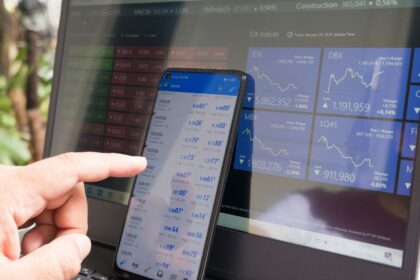Understanding liquidity zones is key to interpreting price movements in cryptocurrency trading. Areas of strong support and resistance are often visible by examining the concentration of buy and sell entries at various price levels. These clusters reflect where participants place significant bids or asks, influencing potential reversals or breakouts.
The volume distribution within the order ledger reveals how deep supply and demand run beyond immediate trade prices. A thicker accumulation of orders near a certain price point suggests higher market resilience against sudden shifts, while sparse listings may indicate vulnerability to rapid swings. Monitoring these layers allows traders to anticipate momentum changes more accurately.
By tracking shifts in aggregated bid and ask sizes, one can gauge underlying sentiment without relying solely on executed trades. For example, increasing offers just above current pricing can signal growing selling pressure acting as resistance, whereas expanding bids below hint at mounting support. This dynamic interplay helps identify entry and exit zones grounded in tangible market interest rather than speculation alone.
Understanding Market Liquidity Through Order Book Insights
To evaluate liquidity effectively, it is critical to examine the structure of buy and sell interests at various price levels. This data reveals how much asset volume is available for immediate transactions without causing significant price shifts. A deep ledger with tightly clustered bids and asks indicates strong support and resistance zones, which stabilize price movements and reduce volatility.
Examining this supply-demand distribution enables traders to anticipate potential price reactions. For example, a large accumulation of sell offers just above the current trading rate can act as a ceiling, hindering upward momentum. Conversely, substantial purchase commitments below the market create a safety net that absorbs downward pressure, offering confidence to holders.
Key Components of Liquidity Visualization
The aggregation of pending transactions at incremental prices forms the basis for visualizing availability in trading venues. This structure often appears as two lists: one showing intent to acquire assets (bids) and another reflecting willingness to offload them (asks). The relative size and proximity of these entries determine how easily trades execute without impacting valuations drastically.
- Depth: Measures total volume accessible within certain price intervals; broader depth implies higher stability.
- Spread: The gap between best bid and best ask; narrower spreads suggest efficient execution conditions.
- Support Levels: Zones with concentrated buy interest supporting prices from falling sharply.
A practical illustration involves observing order clusters before major announcements or during high activity periods. Sharp increases in sell-side quantities may indicate upcoming resistance or profit-taking behavior, while growing demand below signals accumulating confidence or strategic entry points by institutional participants.
Navigating transaction placement benefits greatly from understanding these dynamics. Newcomers might start by watching live interfaces displaying real-time pending intentions, noting how sudden spikes or withdrawals influence quotes. Gradually incorporating this knowledge enhances decision-making clarity, reduces impulsive errors, and refines timing strategies.
The interplay between available volumes at different pricing tiers shapes overall market resilience against shocks. Recognizing where clusters form provides insight into possible bounce-back areas after rapid declines or ceilings limiting rallies. By mastering this framework step-by-step, investors build a reliable foundation for engaging confidently with digital asset exchanges under varying conditions.
Reading Order Book Layers
To effectively interpret the multiple layers of buy and sell intentions, focus on how liquidity concentrations form natural barriers within the trading interface. These accumulations often indicate zones of resistance or support where significant volumes are poised to execute trades. Identifying these clusters helps anticipate potential price stalls or reversals, offering a clearer view of supply and demand dynamics beyond mere price movements.
Examine the distribution of resting bids and asks at varying price levels to gauge market sentiment and momentum. A thick cluster of offers just above the current rate suggests strong selling pressure acting as resistance, while dense bids below imply robust buying interest providing a cushion against downward moves. This spatial arrangement reveals how participants position themselves strategically based on expectations of future price trends.
Understanding Layer Composition
Each tier within the listing represents an aggregation of pending transactions sorted by price priority. The depth at each level reflects available volume ready to be matched, which directly affects the ease or difficulty with which prices can shift through those points. For instance, if a large volume is placed at a specific threshold, it may require substantial opposing activity to push past that barrier, thereby stabilizing prices temporarily.
Practical examination involves tracking changes in these strata over time. Sudden increases in size at certain points can signal institutional interest or algorithmic strategies setting up positions. Conversely, rapid depletion might indicate execution events or cancellations responding to evolving conditions. Monitoring such fluctuations equips traders with actionable insights into ongoing shifts in supply-demand equilibrium.
- High liquidity zones: Act as buffers absorbing large orders without dramatic price impact.
- Thin layers: Suggest vulnerability where even small trades could trigger sharp moves.
- Layer symmetry: Comparing bid and ask distributions clarifies imbalance directionality.
A case study from recent BTC trading sessions illustrated how a concentrated band of orders around $30,000 created formidable resistance, causing multiple failed breakout attempts before eventual penetration. Recognizing this setup ahead enabled more precise entry timing and risk management decisions for participants leveraging those observations.
The practical takeaway is to integrate observation of these stratifications with transaction flow data for enhanced accuracy in predicting short-term directional moves. Combining order accumulation analysis with real-time execution patterns forms a robust framework for navigating trading environments characterized by swift volatility and shifting participant behavior.
Identifying Liquidity Zones
To accurately pinpoint liquidity zones, it is essential to focus on areas within the price spectrum where significant volumes accumulate, creating strong support or resistance levels. These zones emerge from clusters of resting bids and asks visible through comprehensive order aggregation data. Observing concentrated depth at specific price points often signals where participants are ready to execute large transactions, which in turn stabilizes prices temporarily by absorbing incoming market pressure.
For instance, when a substantial accumulation of buy orders rests just below the current price, this zone acts as a support barrier preventing rapid declines. Conversely, densely populated sell interest above the prevailing rate establishes resistance that can cap upward momentum. Traders should analyze these pockets by assessing both the volume and spread of limit instructions, as tighter clustering with high quantities implies more robust liquidity pools capable of influencing short-term directional moves.
Technical Indicators for Liquidity Identification
Utilizing visual tools like heatmaps or aggregated depth charts helps reveal hidden layers of supply and demand beyond mere price movements. These representations highlight thick order placements that form natural barriers. For example:
- Support zones appear as dense buy concentration beneath recent lows, indicating potential bounce points.
- Resistance zones show heavy sell presence near prior highs, suggesting probable rejection levels.
The persistence and size of these clusters provide objective criteria to judge whether such zones will hold under pressure or eventually break due to absorption or exhaustion of liquidity.
Consider a scenario where repeated attempts to push price beyond a certain level fail because each advance meets increasing resting offers. This suggests a highly liquid resistance zone with deep supply layers. Conversely, if buying interest accumulates extensively around a low-range cluster, it may signify a strong support floor likely to trigger a reversal or consolidation phase. Careful monitoring of how volume shifts at these points over time enhances confidence in forecasting imminent turning points based on real transactional intent rather than speculative estimates.
Spotting Large Order Impacts
Identifying significant trades within the liquidity structure is key to anticipating price movements. When large bids or asks accumulate around certain price points, these levels often act as strong support or resistance. For instance, if a substantial volume rests just below the current trading price, it may prevent downward momentum by absorbing selling pressure. Conversely, heavy offers clustered above can stall upward trends.
Observing the volume distribution across various price layers provides insight into available liquidity and potential barriers. A sudden increase in volume at a specific level indicates a concentration of interest that might influence short-term fluctuations. Traders should watch for abrupt shifts in this distribution as they often precede rapid moves due to liquidity imbalances.
How To Detect Large Liquidity Pools Effectively
The aggregation of buy and sell volumes forms distinct zones where supply and demand meet. Visualizing these zones through aggregated data reveals where market participants place their commitments. One practical method involves tracking cumulative size on either side of the spread; disproportionately large figures signal strong liquidity clusters that can halt or reverse price trajectories.
For example, during a recent Ethereum surge, analysts noted an unusually thick accumulation of bids near $1,800. This depth effectively served as a cushion against sharp declines even amid volatile conditions. Recognizing such pockets allows traders to set realistic entry or exit points aligned with probable support levels rather than relying solely on historical prices.
- Monitor changes in volume concentration over short intervals to identify emerging liquidity walls.
- Compare size ratios between bid and ask zones for early detection of directional bias shifts.
- Use real-time data feeds combined with visual heatmaps to enhance situational awareness.
Large transactions embedded within the order flow can temporarily distort apparent liquidity but leave lasting footprints on market sentiment. Distinguishing genuine accumulation from spoofing tactics requires correlating volume spikes with subsequent executions and overall trend consistency. In practice, legitimate large entries coincide with sustained price reactions near established technical boundaries.
A comprehensive approach integrates volume distribution mapping with behavioral cues drawn from executed transactions. This dual perspective increases confidence in interpreting how large-scale commitments shape short-term dynamics within digital asset exchanges. By methodically studying these elements, traders gain clarity on pivotal levels where liquidity concentration dictates directional resilience or vulnerability.
Conclusion: Using Depth for Trade Timing
Precise timing in trading hinges on interpreting liquidity pools and recognizing where strong support and resistance lie within the bid-ask framework. Monitoring concentrations of resting bids and offers reveals zones where price action is likely to pause or reverse, helping traders to anticipate entry and exit points with greater confidence.
For example, a substantial accumulation of buy interest at a certain price level often acts as a robust floor, limiting downside risk. Conversely, thick sell walls can impose resistance that stalls upward momentum. By tracking these imbalances in real-time, one can align trade execution with moments when the supply-demand equilibrium shifts, thereby optimizing position sizing and minimizing slippage.
Key Technical Insights and Future Directions
- Liquidity pockets: Identifying clusters of large resting orders provides actionable clues about short-term price barriers.
- Dynamic support and resistance: These levels evolve as participants add or remove commitments; adaptive strategies leveraging this fluidity outperform static models.
- Order flow anticipation: Integrating volume data with queue positioning enhances prediction accuracy of imminent moves.
The integration of sophisticated algorithms capable of parsing multi-layered transaction queues will deepen understanding of supply-demand mechanics beyond surface-level snapshots. As decentralized exchanges mature, transparent access to granular depth information will empower retail traders, democratizing advantages previously held by institutional actors.
Ultimately, mastering liquidity landscapes within the trading ledger equips practitioners with a strategic edge–transforming raw numerical patterns into intuitive signals for precise timing. This elevates decision-making from reactive guesswork to proactive navigation through fluctuating transactional terrain.





